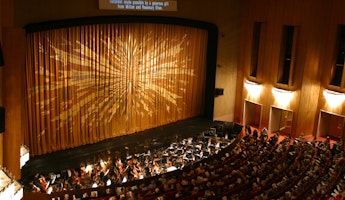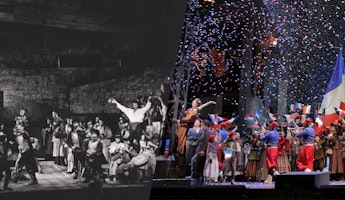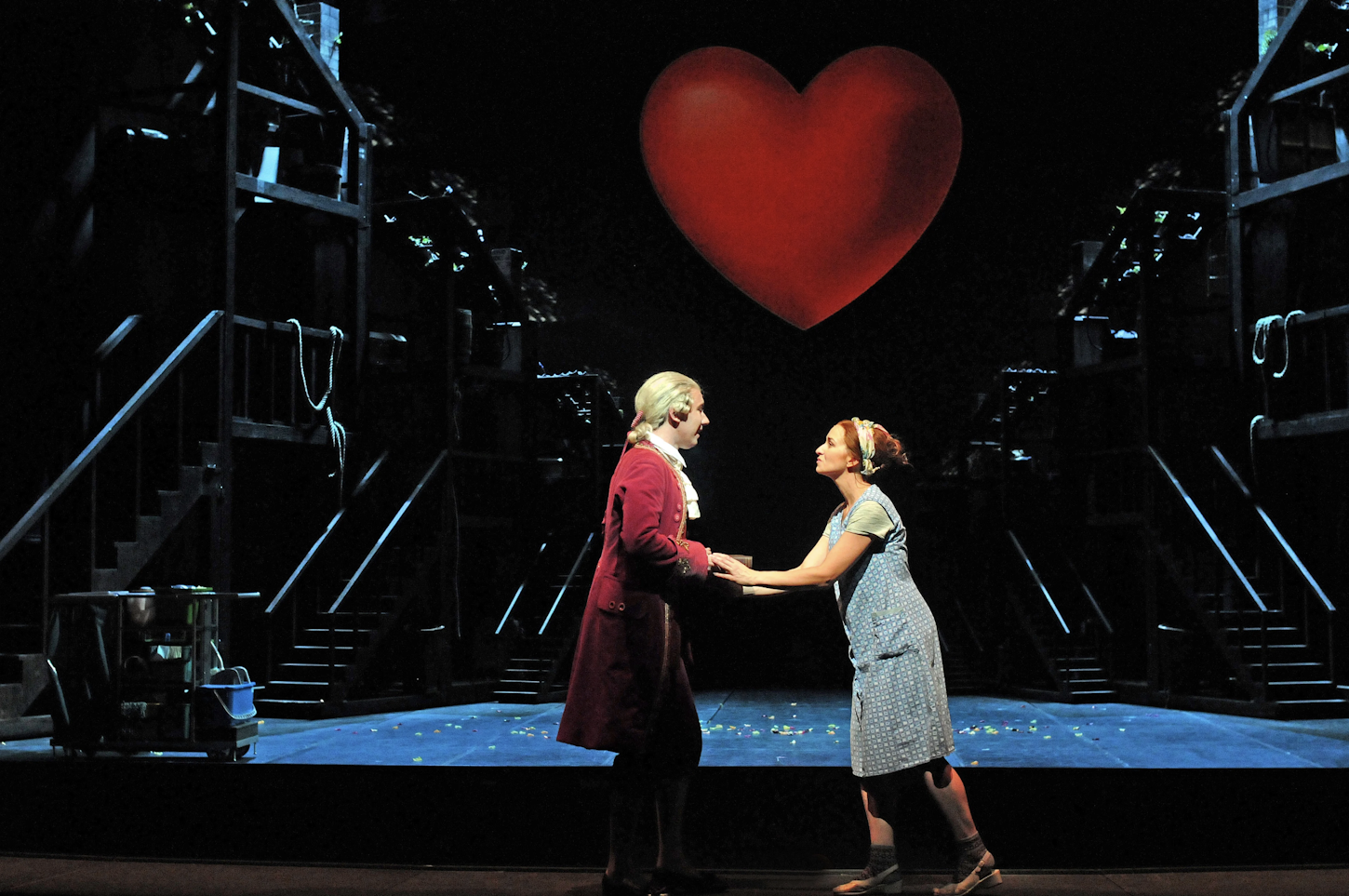Blog
November 9, 2021
Cinderella Here, Cinderella There
Leann Davis Alspaugh has worked as an editor, writer, art director and designer for numerous publishers, including arts magazines and educational publishing, as well as record labels and arts organizations. She is managing editor of The Hedgehog Review: Critical Reflections on Contemporary Culture.
The story goes that Cinderella (La Cenerentola in its Italian name) came about because Pietro Cartoni, the impresario of Rome’s Teatro Valle, had backed himself into a corner. The papal censor had vetoed Cartoni’s suggestion of producing a naughty French comedy about the corrupting dangers of court life. Cartoni frantically summoned composer Gioachino Rossini and the two of them, along with librettist Jacopo Ferretti, sat up all night in Cartoni’s cold apartment trying to come up ideas for a suitable replacement opera.
They tossed around 20 or 30 subjects, rejecting them all as too serious or too expensive. Cartoni had fallen asleep. Ferretti was exhausted. Rossini, making himself at home, had climbed into a bed and wrapped himself up.
“Cinderella?” Ferretti murmured.
Rossini sat bolt upright. “Would you have the courage to write me a Cinderella?”
“Would you have the courage to set it to music?” Ferretti countered.
“And the outline?”
“You can have it in the morning if I can go without sleep tonight.”
“Good night!” Rossini responded, tucking himself in and promptly falling asleep.
Regardless of the accuracy of the story, the composer’s enthusiasm was real enough. In a little more than three weeks, Cinderella, or Goodness Triumphant, was ready for production. With Cinderella, Rossini had a well-known tale full of potential for the kind of tragicomedy for which he was rapidly making a name for himself.
ROSSINI THE OVER-ACHIEVER
Gioachino Rossini (1792–1868) was immersed in music from infancy. His parents were working musicians, and his mother had a career as an itinerant opera singer. Rossini appeared on stage as a boy soprano and later entered Bologna’s Accademia Filarmonica at the remarkably young age of 14.
His early compositions were farse, one-act operas produced on a limited budget with small casts. Rossini wrote four of these from January 1812 to January 1813, demonstrating energy and musical inventiveness in narrow artistic confines. His first two-act opera, La Pietra del Paragone (“The Touchstone,” 1812), brought him real success, playing for more than 50 performances in Milan. As a “melodramma giocoso,” an opera in a comic setting but with moments of pathos, it also had implications for much of the rest of Rossini’s career.
Rossini transformed the traditions of Italian opera, often mixing elements of opera seria (serious opera) and opera buffa (comic opera) to inject a dash of dramatic realism. His innovative orchestrations—new harmonies, unexpected textures, instruments pushed to extreme registers—brought dynamic tension to an art form that had become staid and predictable. Rossini favored singers with vivid lyricism and transparent technique, and ensemble singing that propelled the narrative rather than interrupted it. Rossini was only in his twenties when Cinderella premiered in 1817, but he had by then established himself as an innovative composer whose name alone could command an audience.
IF THE SHOE FITS
If you think you can’t have a Cinderella without a glass slipper, think again. Rossini and Ferretti didn’t think it was necessary—their heroine is armed instead with a pair of bracelets. As it happens, they were on solid ground taking such a liberty.
There are hundreds of variations of the Cinderella tale and almost all of them include a slipper. A Chinese version from the ninth century A.D. (a period that coincides with the emergence of foot-binding) has virtually all of the plot elements we’d recognize today, including a tiny lost golden slipper. Even earlier, the ancient Greek historian Strabo records a tale in which an eagle flies off with a courtesan’s sandal and drops it into the lap of the Egyptian pharaoh, who searches all of Egypt to find her and make her his wife.
In fact, the glass slipper appears in only one version, that of Charles Perrault, published in Tales and Stories of the Past with Morals, or Mother Goose Tales, from 1697. This particular detail has long fascinated scholars, who conjecture that Perrault misheard pantoufle de verre (glass slipper) for pantoufle de vair (fur slipper); others contend that the diligent Perrault would never have mistaken an obsolete word such as the medieval vair for verre.
CINDERELLA AS GIRLBOSS
Everyone knows the tale, but let’s consider the nature of the heroine herself. Of course, she’s a beautiful underdog, an overlooked servant who could be more if only given the chance. And as the star in her own eponymous story, we can be sure that she will be.
She is also eternally fascinating. Witness the recent musical from Amazon Studios with pop diva Camila Cabelo bringing a new spin on the role of Cinderella. An aspiring dressmaker (“Dresses by Ella”), Cinderella sells her frothy creations in the village market. When the Fairy Godmother descends in a vision of gold sequins, he (not a typo) first exchanges Cinderella’s drab work dress for a turquoise-colored pantsuit (reinforcing stereotypes while also disrupting them.) Properly attired in a lovely gown, Cinderella arrives at the ball and she and the prince fall in love as custom dictates. But not so fast. What about my work, Cinderella wails? Why can’t a girl be both lovestruck and business savvy?
This updated Cinderella is intended to make the title character relevant today, to give her a chance at self-actualization, to shatter the glass ceiling, to follow her passion—all those vital impulses we cherish so much in the modern age. Retellings of the Cinderella tale often discard the class tensions that animated the original—servant girl loved and lifted in station by the prince—but the central drama of her story, her rescue from lowly circumstances and mistreatment, is something, even in a democratic age, to which most everyone can relate.
Is love enough even if the cupboard is bare? What about a loveless home with a garage full of luxury automobiles? Can a woman “have it all”—career, family and happiness? These questions are perennial because they matter. And the character of Cinderella keeps showing up in these discussions because she presents the dilemma in a tidy package. Youth and beauty are powerful, and love is a catalyst, but all of these together may kindle only a momentary flame. Cinderella and the Prince will need more than just love.
With its subtitle of Goodness Triumphant, Rossini’s Cinderella establishes that the opera will be more than a glittering spectacle following a well-worn storyline. From the moment that the heroine offers the beggar bread, she demonstrates empathy in marked contrast to the grasping, selfish people around her. By the opera’s end, she asks merely to be recognized as a legitimate member of the family. While she has not quite reached the level of a girlboss, she is universally acknowledged as loved and worthy. Who could ask for anything more?








/03-cosi/_dsc0996_pr.jpg?format=auto&fit=crop&w=345&h=200&auto=format)
















